The brand I used is Ferti Organic
-
ICMag with help from Landrace Warden and The Vault is running a NEW contest in November! You can check it here. Prizes are seeds & forum premium access. Come join in!
You are using an out of date browser. It may not display this or other websites correctly.
You should upgrade or use an alternative browser.
You should upgrade or use an alternative browser.
- Status
- Not open for further replies.
Liming Agents
Liming Agents
here's some actual information on Liming Agents. I hope you find this helpful.
Liming Agents
Hmm if only people were as quick to help as they are to hate here.
If you read the original post I was saying i wasnt sure about the question of a substitution of gypsum. Never used oyster shells.. but I'm taking a page out of B1's manual and saying GET THE DOLOMITE!!
Take v everything you read here with a grain of salt though.. even from the"guru's"
Maybe if someone else chimed in my pothead ass wouldn't be trying to help.
here's some actual information on Liming Agents. I hope you find this helpful.
"I just got back from a ride in the country to clear my head and I was thinking about the best way to help you with the calcium deal.
Here is a rundown on liming agents in general and what they contain.
1. Limestone - calcium carbonate
2. Dolomite Lime - elemental calcium (Ca) and magnesium carbonate
3. Gypsum - elemental calcium (Ca) and sulphur in a the form of S04 meaning that it is elemental sulphur with 4 oxygen molecules attached which is important in the CeC paradigm.
4. Oyster Shell Powder - calcium carbonate (CaCo3) - This product is not what it would appear from the name, i.e. it's not a product made from crushed oyster shells but rather it's a particular oyster shell mined from the San Francisco Bay from ancient sea deposits made up of very tiny and fragile oyster shells.
5. Crushed Oyster Shells - calcium carbonate (CaCo3) and this product is made from crushed oyster shells.
As you can see, all of these liming agents either contain elemental calcium or calcium carbonate and it's the calcium which is used to correct acid conditions in a soil.
The reason that I do not recommend using dolomite lime is that it contains 2x the amount of magnesium vs. 1x of elemental calcium. That isn't to say the magnesium isn't important - quite the opposite it's extremely important but magnesium has absolutely nothing to do as far as a liming agent.
Excessive magnesium will cause soils to bind up making it difficult for the plant's root hairs to move through the soil to exchange their hydrogen cation (+) for minerals, macro and micro nutrients.
In plant-based soil amendments like alfalfa meal and kelp meal, a review of the levels of calcium vs. magnesium show that it's 4 and 5x - quite the opposite of dolomite lime.
Calcium carbonate is water soluble while magnesium is not. You can use this to your advantage by using limestone in water as part of your irrigation program. I'd recommend about 1 tablespoon per 1 gallon of water. Stir, shake, stir, shake - then apply. This will provide your plants with the amount of calcium necessary to maintain health and growth vigor.
Crushed oyster shells is also pure calcium carbonate. It can be dissolved in water but that can take several days/few weeks. This is the product that chicken growers feed to their hens both for the calcium content (to insure strong egg shells) but also for grit used the hen's gizzard to digest grains.
Oyster shell powder is pure calcium carbonate and is instantly dissolved in water.
You can use apple cider vinegar and soak the crushed oyster shells to extract the calcium carbonate. By volume you would want to mix 1x crushed oyster shells (or egg shells) with 3x apple cider vinegar and let it brew for 2 - 3 weeks. The vinegar will extract the calcium from the eggs shells in a concentrated form. Mix 1/4 cup of the vinegar with 1 gallon of water and apply to your soil.
And if you take egg shells and put them into a large pan with your Weber BBQ fired up and heat them until they turn every shade of dark brown to black and then take them and crush them and do the same deal with the crushed oyster shells, you'll end up with calcium phosphate. Apply at the same rate noted above for the crushed oyster shells. You can also process the crushed oyster shell the same way - heating until charred and then distilling the calcium out with apple cider vinegar.
While it's true that the good ol' N-P-K deal dominates the cannabis growing meme, in the world of soil science the basic study is often about the building-block cations: Calcium (Ca+2), Magnesium (Mg+2), Potassium (K+1) and Sodium (Na+1) and the acidic cations, Hydrogen (H+1) and Aluminum (Al+3)
HTH
LD "
localhero
Member
Bamboo! man I wish it were humid enough out here for the larger tropical species. one day it would be great to see actual dimensional lumber made from bamboo and not talking lumboo lol.
good to see everyone at the starting gate and ready to jump on a great season! best wishes and vibes to all the big tree family!!!!! I might even get a few outside this year, just a little 400 gal bed...
I might even get a few outside this year, just a little 400 gal bed...
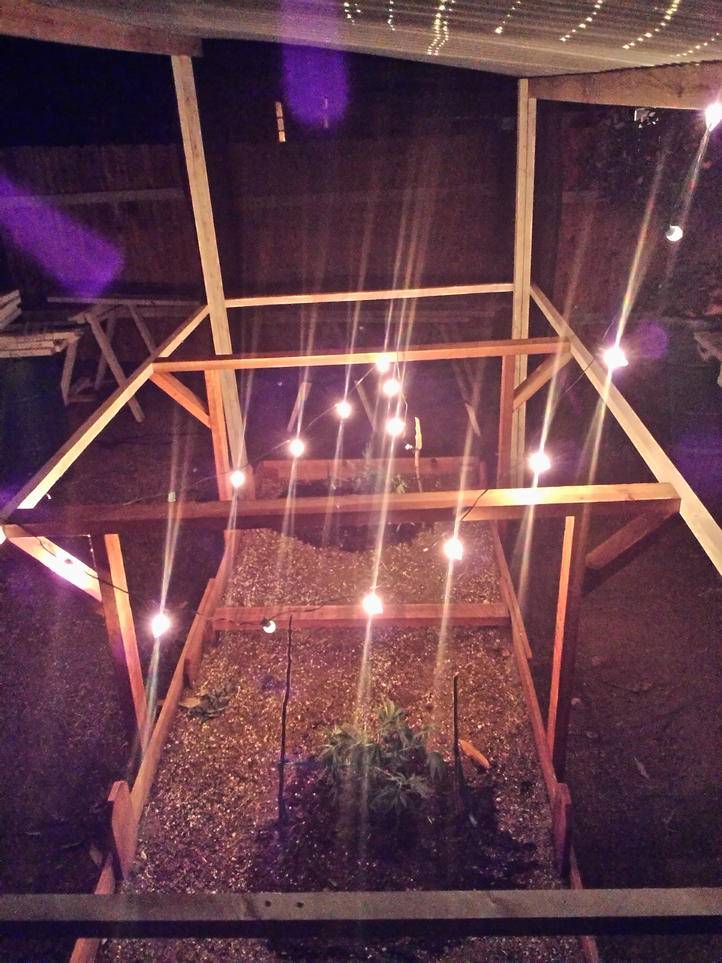
good to see everyone at the starting gate and ready to jump on a great season! best wishes and vibes to all the big tree family!!!!!
Last edited:
bamboogardner
Active member
bamboogardener: are u actually growing bamboos? what species?
Hi guys and yes I grow all the rare bamboo's I have several groves and they are shooting up all over the place right now. I am not far from Sac. If anyone wants any, I'll gladly dig some up. Bring a big truck. Most are 60' plus, but I could dig some smaller ones that would fit in a pickup. Enough about bamboo. Don't want the alpha males of this thread complaining. Were here to learn about Large Plants Outdoors and not bamboo, lol. Shoot me a PM if your interested or need info.
P.
We have golden bamboo here.
It hates the winter time but seems to want to live.
Are there any very cold hardy types that can then handle lots of dry heat?
It hates the winter time but seems to want to live.
Are there any very cold hardy types that can then handle lots of dry heat?
bamboogardner
Active member
We have golden bamboo here.
It hates the winter time but seems to want to live.
Are there any very cold hardy types that can then handle lots of dry heat?
The golden bamboo is prevalent all through the south. Grows everywhere and is quite evasive. The Black Bamboo, Phyllostachys Nigra 'Black is very cold and drought hardy when established. Foliage loss occurs at 0 to -5 degrees F. with complete top kill of canes at around -10 to -15 degrees F. Another pretty one is Phyllostachys Nigra 'Bory' - Commonly called Leopard or Snake Skin Bamboo. This bamboo develops a unique pattern resembling the aforementioned skins when exposed to sunlight. A very rare bamboo. Good to 0 degrees. There are many others of course, some with variegated leaves, some with stripes that go down the canes. You really have to be into the bamboo to see the differences.
The most popular is the Nigra and the Bory. If you want some, they are yours. You would pay over a $100 a container for these at any nursery that was lucky enough to have them. Free to the Large Plant forum crew.
localhero
Member
wow too bad I am so far south of sac! the fallen leaves are supposed to be high in silica too, would be great addition to compost/soil if I am correct. it might sound stupid, but its always been a goal to stumble across a bamboo forest. its too bad all the things I love to have around make the neighbors hate me- marijuana, bamboo, chickens, passion fruit, lol I am destined to move out of the city.
edit, just read somewhere that bamboo leaves could inhibit plant growth, so maybe not the best idea to use in a compost situation, maybe bamboo gardener could chime in on that?
edit, just read somewhere that bamboo leaves could inhibit plant growth, so maybe not the best idea to use in a compost situation, maybe bamboo gardener could chime in on that?
Last edited:
bamboogardner
Active member
Hey local. Not sure on the bamboo leaves inhibiting slow growth. I'll ask one of my mentors on that. I don't use it in the compost pile though. On another note, I made one of your recirculating venturi 55 gallon tea brewers a few years back. Works like a charm. Just about to make another soon. Thanks for taking the time to research, design and post your information for all of us to use.
Cool.
Thanks for the tips on the varieties.
How long did you grow them to get them to 60' tall?
Thanks for the tips on the varieties.
How long did you grow them to get them to 60' tall?
bamboogardner
Active member
60 foot is actually a small one. They only take 2 to 3 years to get that tall. Actually, the new shoots are the ones that go that big. I have some here with your name on them. I know your closer to me than most. Next time through Sac or nearby, let me know and I will bring you some or you can stop by. It is the least I can do since I have gleaned so much info from your posts that I could never begin to repay you. 
localhero
Member
Glad the brewer worked for you! It really is an honor to be able to make a contribution that helps the community. Weird too I was just shopping for a new pump to make tea with this very day. They got more expensive, like 200 bucks. Still with the cost of a barrel around 15 and fittings you're looking at 230 ish for a 50 gallon brewer. Cheaper by a lot if you swap the solids capable pump for a regular pond pump. Scale able too, next up is a 250 gallon tote brewer...
bamboogardner
Active member
next up is a 250 gallon tote brewer...
Wow, let me know when you have that one designed. Count me in to test it with you. Just send me the specs. Thanks Bro.
I grow a bunch of giants in the tropics. 4 varieties of Guadua, 2 of giant asper... a black japonica, stenostachum brachinatum, pseudoarandinacea gigantochloa (my personal fave for an ornamental), vulgaris... I grew something I had sourced as philo. nigra but it looks nothing like the nigra I have seen here in california... things tend to be bigger in the tropics, but this nigra never got thicker than a half inch and is one of the most random runners I have ever encountered... shoots pop up in the wierdest of places. I am after himalayacalimus species at the moment. Azulis in particular. Blue Himalayan Bamboo. (#bambooboner)
My first attempt at this outdoor thing (first time in dirt as well). This will definitely be a challenge adjusting/adapting and figuring things out but luckily I found this "cheat sheet" of a thread.
Started inside (from clone):
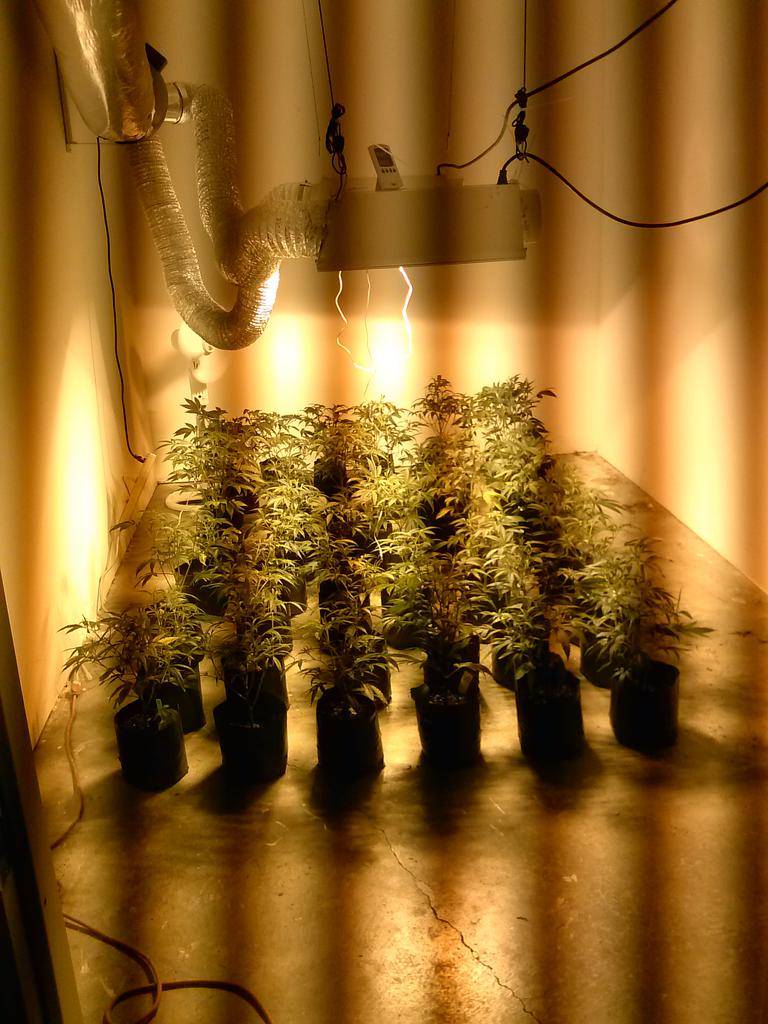
Getting a little taste of the sun for half a day, just to get an idea how she'd handle the wind, bugs, light, etc:
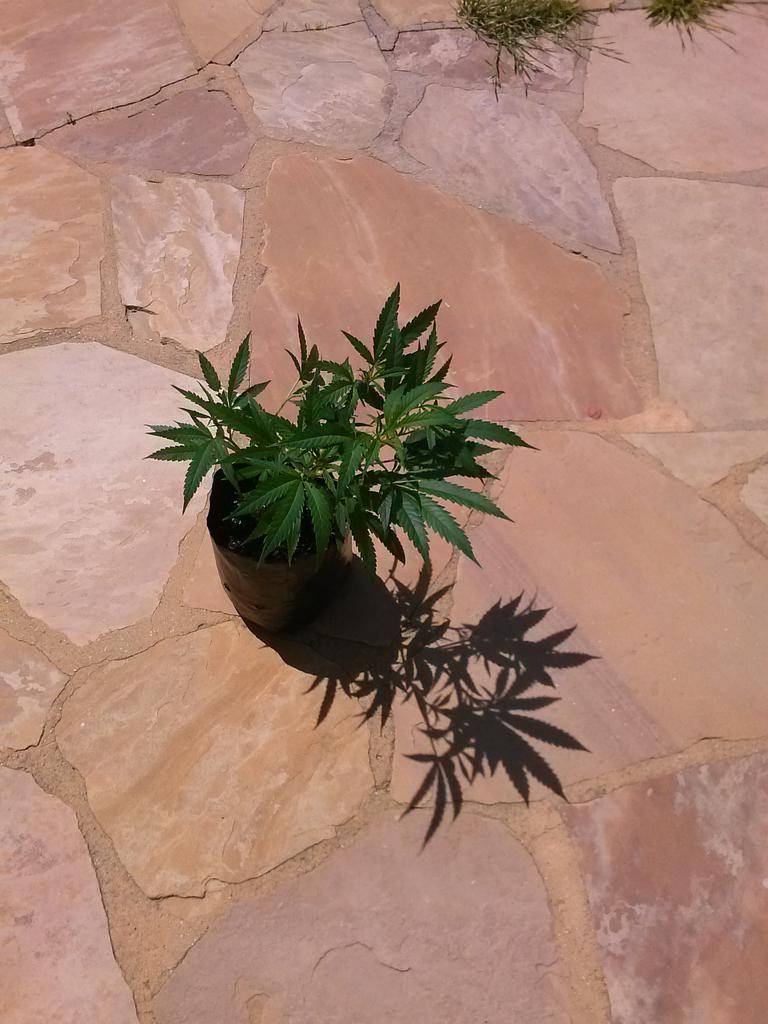
Grew a little:
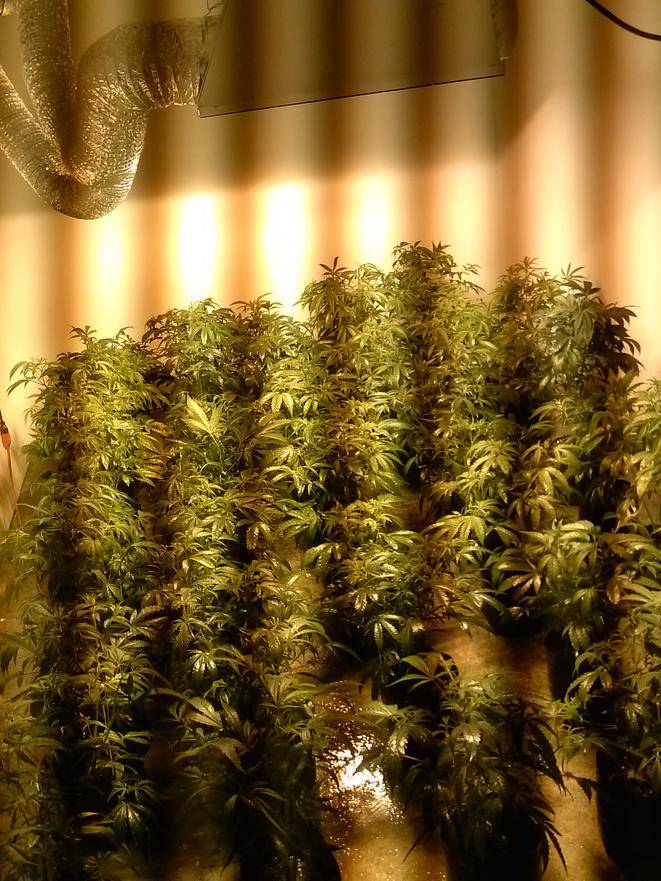
Put some out for a light dep hoop house:
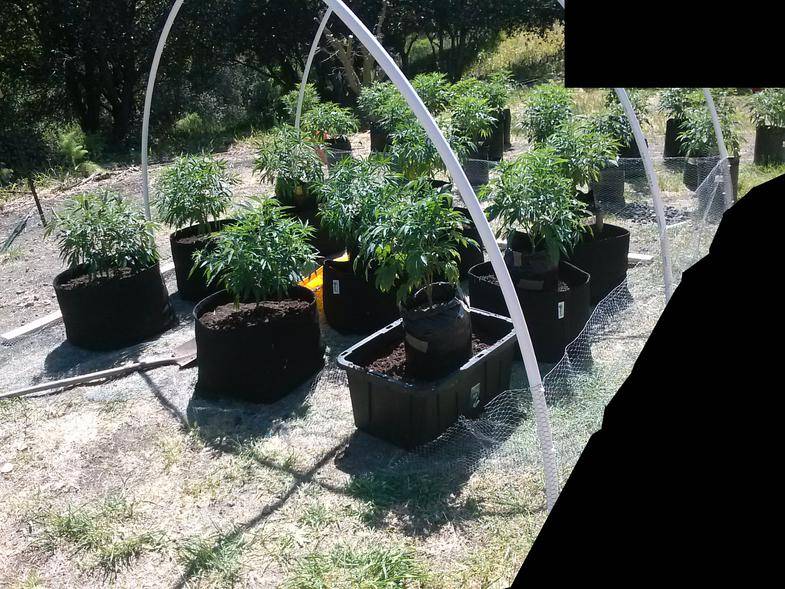
The rest are going out in mid-June, or when space runs out:
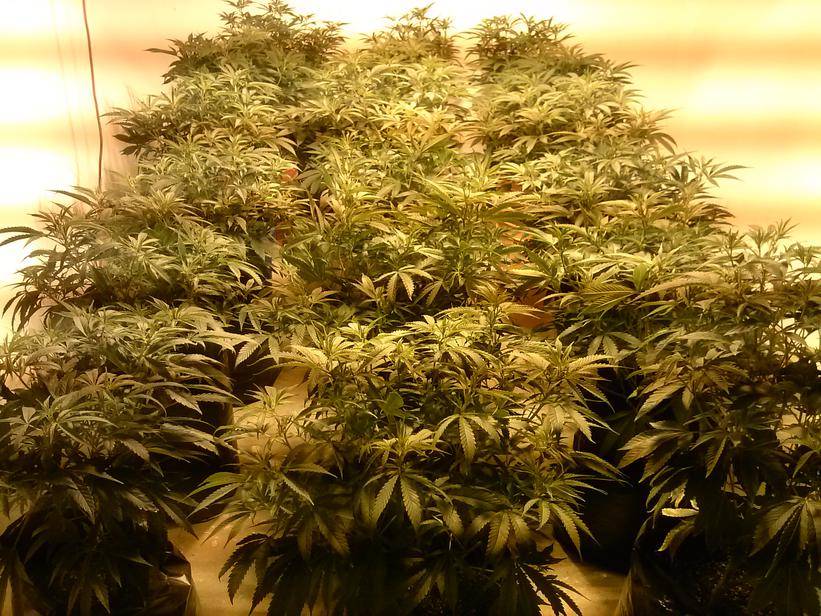
Started inside (from clone):
Getting a little taste of the sun for half a day, just to get an idea how she'd handle the wind, bugs, light, etc:
Grew a little:
Put some out for a light dep hoop house:
The rest are going out in mid-June, or when space runs out:
Last edited:
bamboogardner
Active member
I am after himalayacalimus species at the moment. Azulis in particular. Blue Himalayan Bamboo.
I have the Blue Himalayan. I have to check it and make sure it is surviving. We had a bad cold snap, down to 19 for a week and it was not happy. The Blue is a clumper, not a runner and is very pretty, not like the giants you grew in the tropics. If she is good, I could probably divide it and send you a division. They don't grow very tall and I could get it in a box after trimming it.
C
CaliGabe
Better start than most have their first time around. Good luck and looking forward to some updates.My first attempt at this outdoor thing (first time in dirt as well). This will definitely be a challenge adjusting/adapting and figuring things out but luckily I found this "cheat sheet" of a thread.
Most of my tropical giants are actually clumpers. i have a clump of dedrocalymus asper with 8.5" canes (3rd node above the "beard") that is as fat as a grain silo... but its still a clump. Most guadua (my favorite timber species) is a very slow moving runner only growing 10-15' outward in every direction each year. Building the most spectacular groves for walking. The cane spacing within the grove is perfect for strolling...On the aggressive side, I have guerilla planted real runners like phylostachis aurea... that shit will knock over a barn... and the canes are only 1-1.5" thick and spaces 1-2 feet apart.
Last time I was down I planted cuttings of japanese arrow bamboo with canes straight and rigid enough to make shafts for modern bows. Cannot recall the name.
Looks like a solid start, grow nerd.
Last time I was down I planted cuttings of japanese arrow bamboo with canes straight and rigid enough to make shafts for modern bows. Cannot recall the name.
Looks like a solid start, grow nerd.
- Status
- Not open for further replies.


